The fisherman's town of Imsouane, the coastal city of Essaouira, and Marrakech.
In the late morning we left Tadourant towards the coast hoping the blue sun would stop hiding behind the clouds. Luckily, the sun did show itself, but the light was white and the horizon line barely distinguishable.
We made it to Imsouane around mid afternoon and were in need of a snack. Imsouane is a small fisherman's town located about 50 km north of Agadir and is known for having good waves for surfing. When we arrived, firshermen were still coming onto the shore in small blue boats just like the one on the left below, each waiting their turn to be pulled onto land by a tractor and unload their cargo. After savoring some freshly fished sardine and sole grilled on a bbq, we got back into the car and drove another 50 km or so, before arriving in Essaouira.
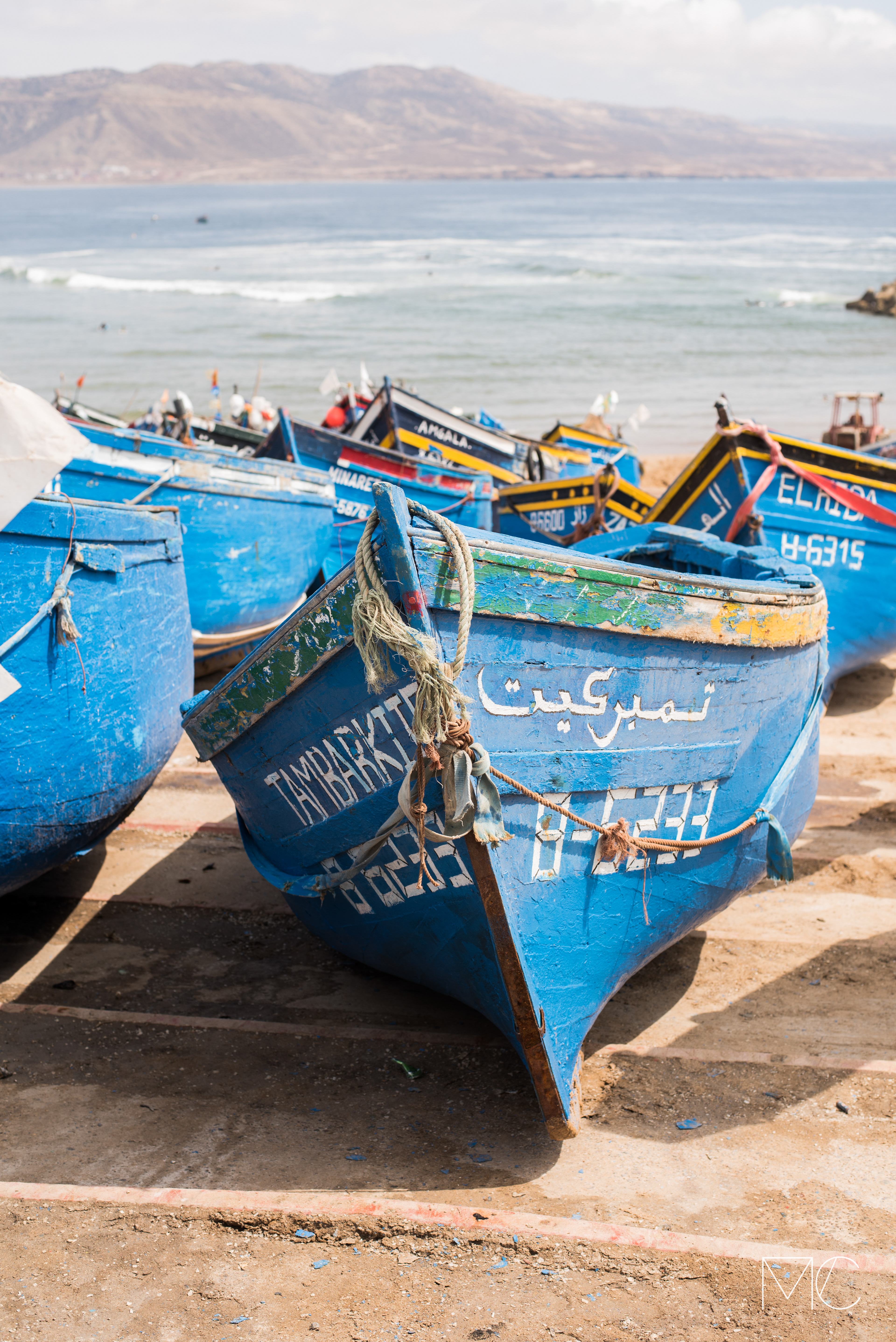
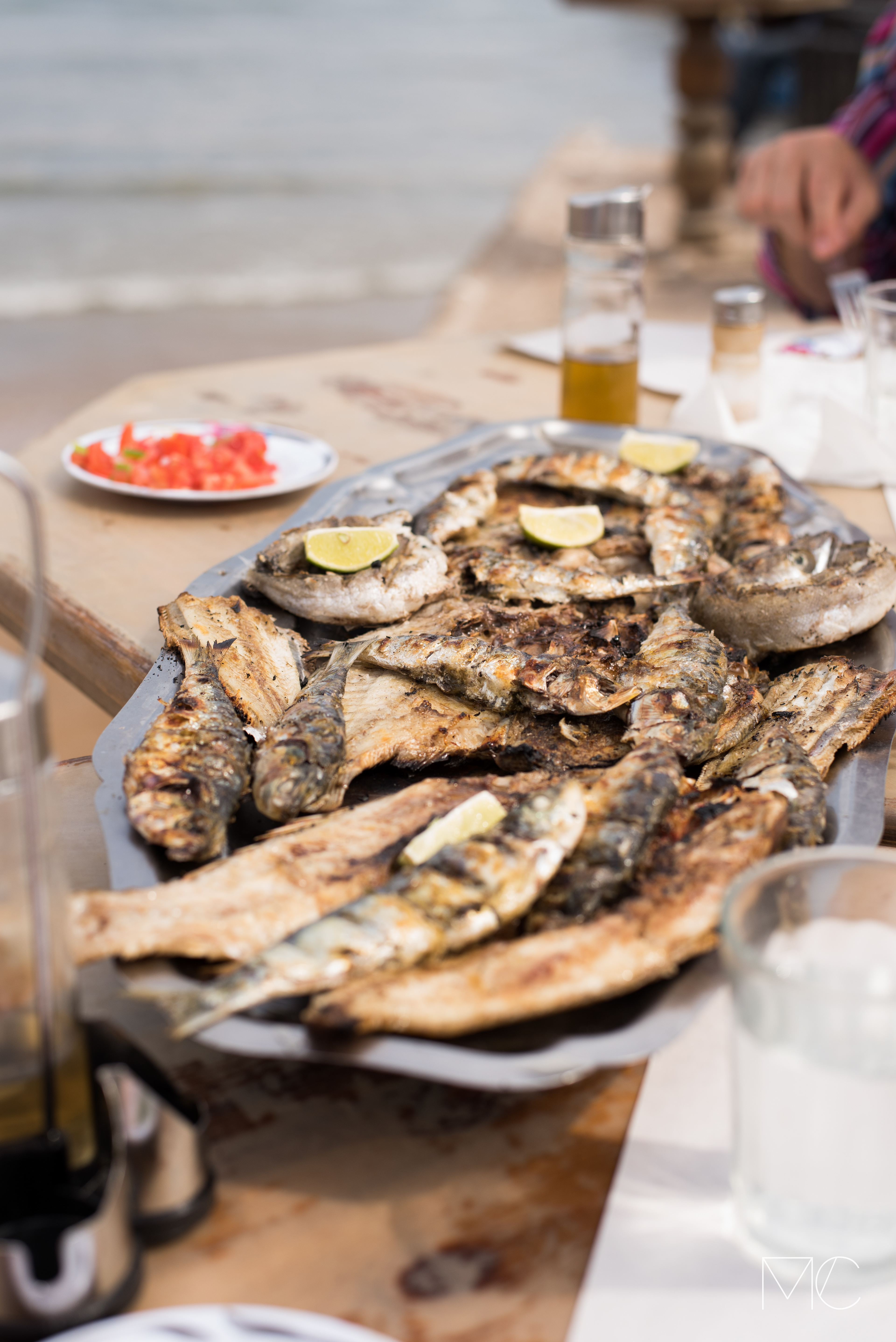
Essaouira is a city of about just under eighty thousand people (in 2014) and was formerly known as Mogador, as the portuguese called it when they seized the city in 1506. Four years later, in 1510, the Castelo Real of Mogador fell to the local resistance and Essaouira became an export port for sugar molasses and became a pirate nest.
The modern city of Essaouira was founded by Mohammed III during the mid-eitheenth century with the goal of increasing exchanges with European powers by using the port-city's strategic location along the Atlantic and close to Marrakesh. Essaouira's forteresse was built during this time, and the modern city, originally named Souira, "the small fortress", became known as Es-Saouira, "the beautifully designed". It is true that walking through the town, which has now become popular amongst toursits, is very enjoyable, even in the summer months, when the constant breeze never makes the temperature surpass 28 degrees Celcius.
From it's rebuilding by Mohammed III and until the end of the 19th century, Essaouira was Morocco's main port. At that time, Essaouira's trade volume was double that of the port of Rabat. Today the port still functions and dozens of small boats like those in Imsouane come in and out of the port each day. There are larger fishing boats too, ones with some 15-20 fishermen on-board.
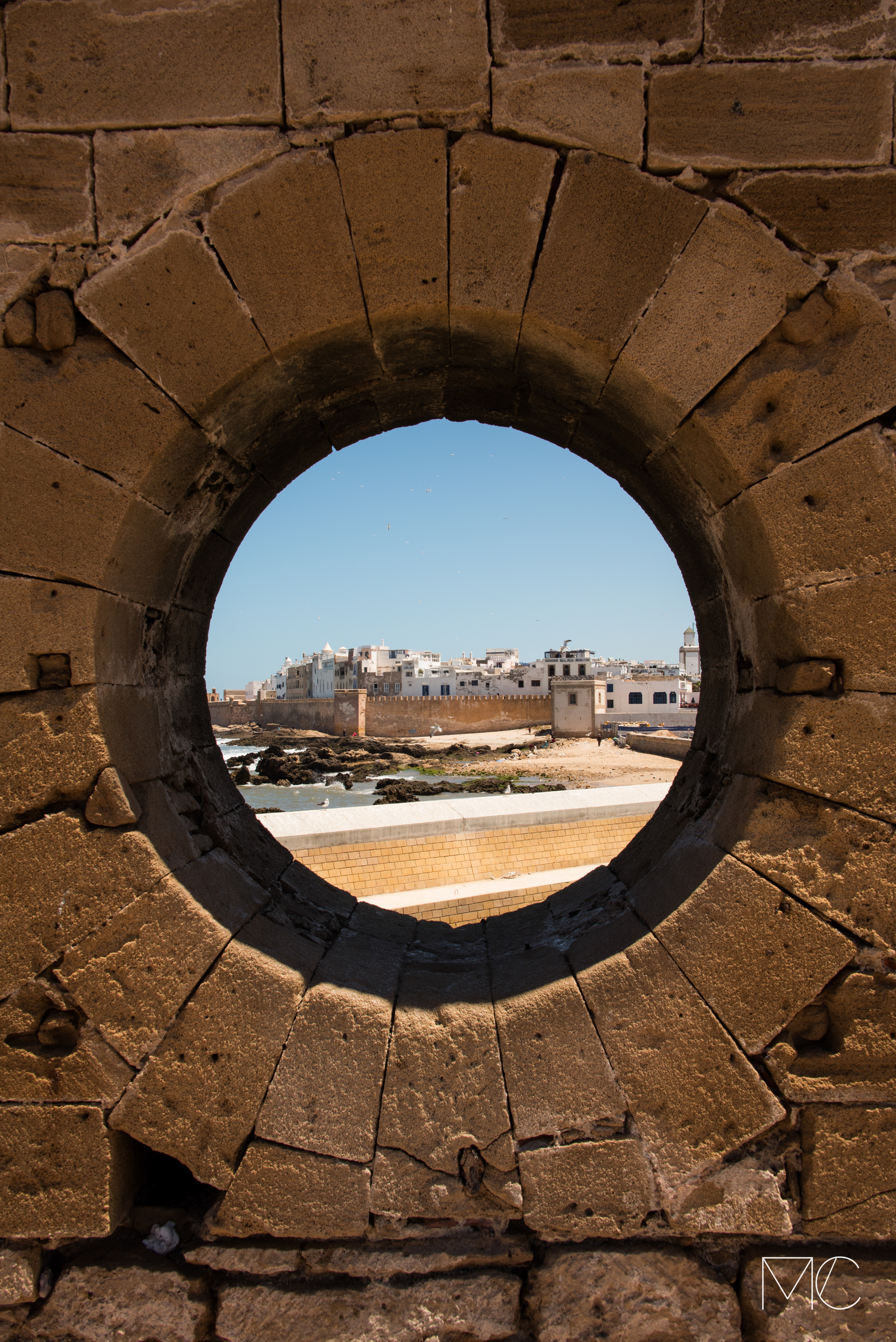

When the large boats come in, a crowd forms on the dock. They come to buy the fish directly from the boat, subsequently to sell them on the market or to distribution channels.
After the first few boxes full of fish come out of the boat, men start discussing the price in a seemingly ad-hock way. The fishermen do not seem to start taking the rest of the fish out of the boat until a price has been reached. Once the price is right, the rest of the fish is taken out of the boat.
Some of the fish ends up in for sale in the fish market that is within the port. The odour is foul but the fish extremely fresh. Just like in Imsouane, we could have eater some fish straight off the bbq, bud decided to carry on.
At sunset, since Essaouira faces directly west, the golden sun gently strikes the fortesses, allowing for some pretty pictures!
Two nights later, we headed for our final destination: Marrakech. I have to say, Marrakech was not my favority city, it felt extremely touristy and almost Disney-like. Nonetheless, it is a pretty city with its souks and small alleys.
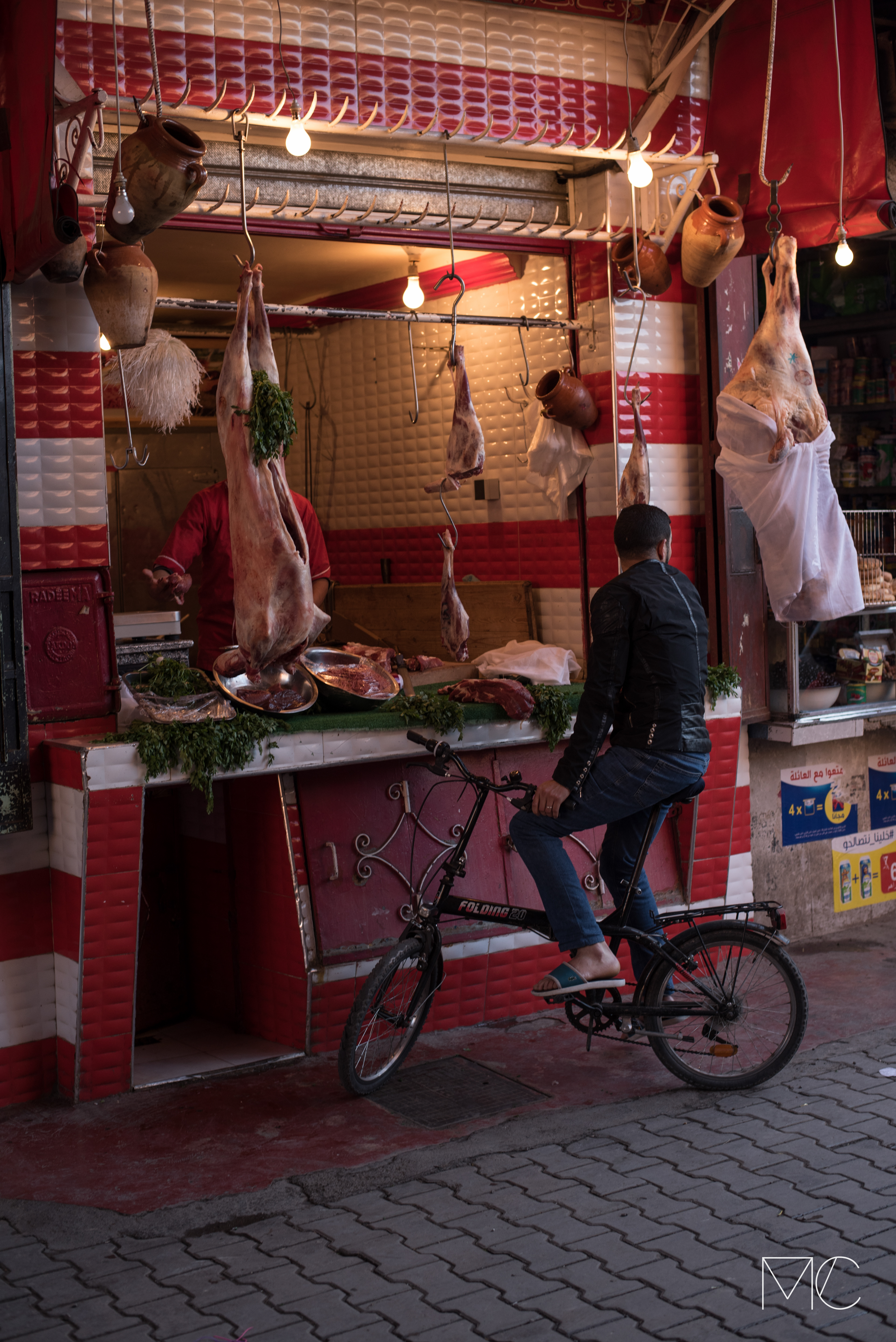
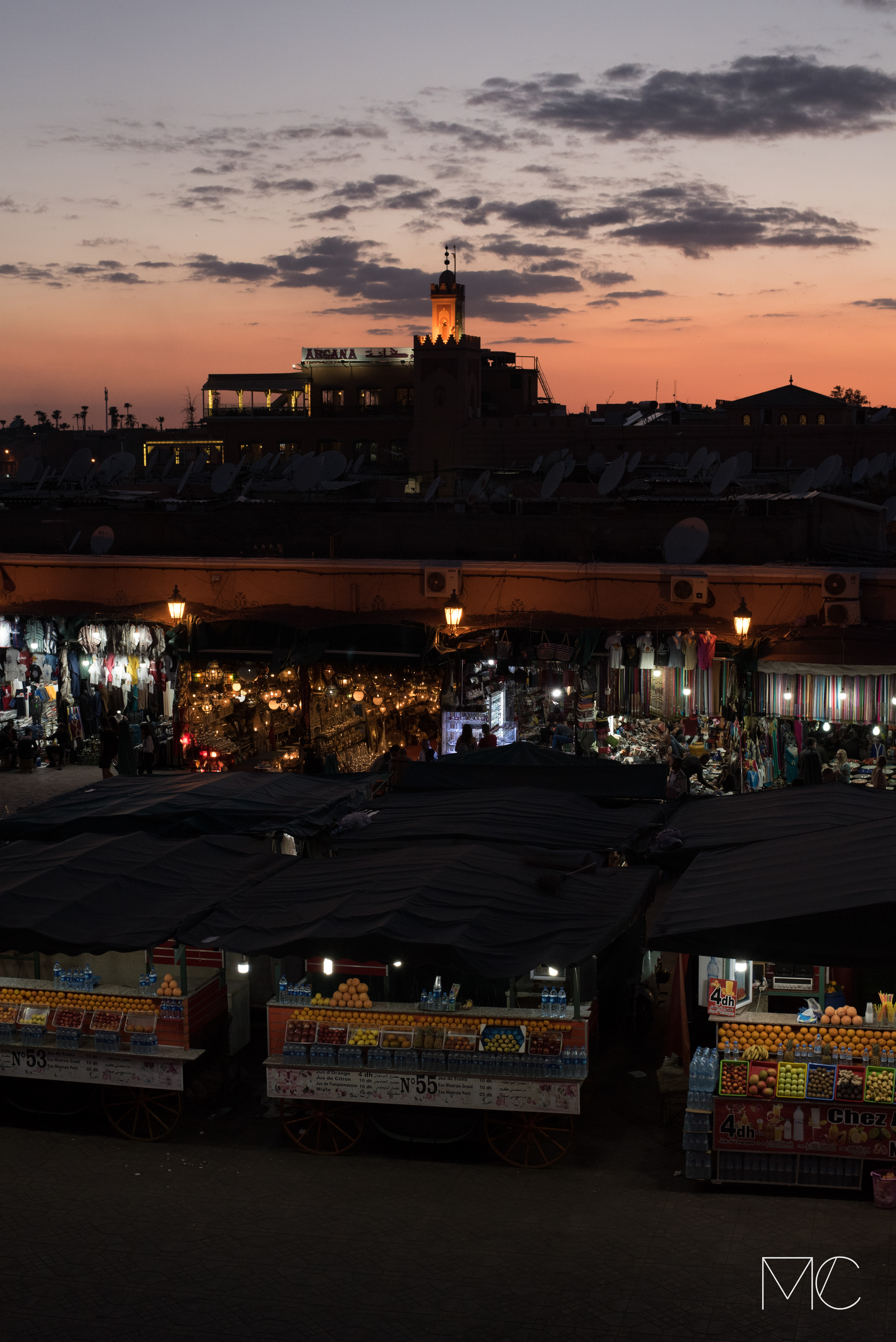
On our trip's last day we went to the Saadian Tombs that date back to the the Saadian Dynasty's sultan Ahmad al-Mansur (1578-1603). The tombs contain the bodies of around 60 Saadians, including al-Mansur himself, and are composed of three rooms. Interestingly enough, the tombs were not rediscovered before 1917, but their highly detailed and elaborate decor is amazingly well conserved.
After 9 wonderful days traveling around with the familly it was time to head home. Until next time Morocco, إن شاء الله